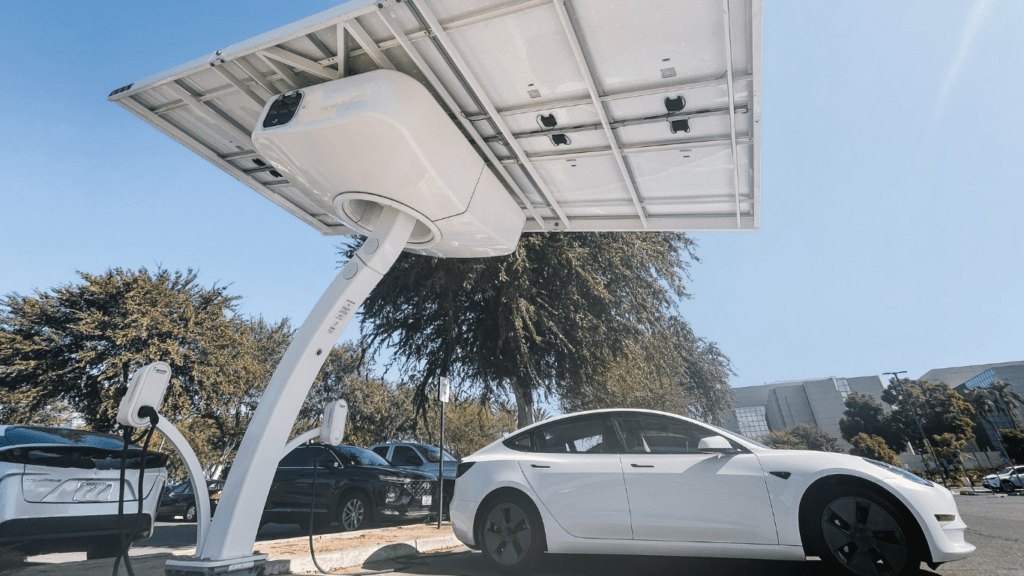Evolution of Electric Vehicles
Electric vehicles (EVs) have transformed drastically over the past few decades. In the 1990s, the first modern EVs like the General Motors EV1 emerged but were limited by battery technology. They offered short ranges, around 70 to 80 miles, and lengthy charging times. Consequently, these early EVs struggled to compete with internal combustion engine vehicles.
Battery advancements in the early 2000s significantly improved EV viability. Lithium-ion batteries replaced older lead-acid types, which increased range and efficiency. Tesla entered the market in 2008 with the Roadster, marking a turning point. It offered over 200 miles per charge, showcasing the potential of high-performance EVs.
Government initiatives further accelerated EV evolution. Incentives like tax rebates and stricter emission regulations drove consumer interest and corporate investments. Countries like Norway and China led the charge, bringing about faster adoption and higher sales.
Technological progress in recent years redefined what EVs could achieve. Modern EVs now boast ranges exceeding 300 miles, enabled by innovations in battery management systems. Fast charging technology, often achieving 80% charge in under 30 minutes, addressed range anxiety and made long-distance travel feasible.
Charging infrastructure also evolved in parallel. Public fast charging stations proliferated across cities, highways, and rural areas, offering more accessibility. Companies such as ChargePoint and Electrify America deployed extensive networks, facilitating easy recharging options.
Automakers responded by introducing diverse EV models. From luxury sedans to affordable hatchbacks and versatile SUVs, the market expanded rapidly. This diversity appealed to a broader audience, making EVs a common choice for many drivers.
As battery and charging technology continue to advance, the gap between EVs and traditional vehicles narrows. EVs now offer competitive performance, convenience, and environmental benefits, solidifying their place in the automotive industry.
What is Fast Charging Technology?
Fast charging technology dramatically reduces the time required to recharge electric vehicle (EV) batteries. With this innovation, EV owners gain convenience and enhanced vehicle functionality, making longer trips feasible.
Types of Fast Chargers
There are several types of fast chargers. Level 3 chargers, known as DC fast chargers, are the most common and rapidly deliver high power to EV batteries. Examples include the Tesla Supercharger and the CHAdeMO standard. Another type is the ultra-fast charger, which offers even higher power output, like the IONITY network in Europe. These chargers use different connector types, ensuring compatibility across various EV models.
Charging Speeds and Standards
- Charging speeds vary depending on the technology.
- DC fast chargers typically provide 50 kW to 150 kW, enabling most EVs to charge up to 80% in 20-30 minutes.
- Ultra-fast chargers deliver up to 350 kW, reducing charging time further.
- Standards such as CCS (Combined Charging System) and CHAdeMO define the protocols for these chargers.
- CCS supports both AC and DC charging, while CHAdeMO focuses on DC fast charging.
- The choice of standard impacts charging speeds and compatibility with different EV brands.
Benefits of Fast Charging for EVs

Fast charging technology offers several benefits that are transforming the electric vehicle landscape.
Reduced Charging Time
Fast charging significantly cuts down the time needed to recharge EV batteries. With Level 3 DC fast chargers, most EVs can go from 0% to 80% in about 20-30 minutes. Ultra-fast chargers, like those in the IONITY network, offer speeds up to 350 kW, achieving similar results in even less time. This efficiency reduces waiting periods and allows EV drivers to get back on the road quickly.
Increased Convenience
The convenience of fast charging can’t be overstated. It alleviates the need for lengthy overnight charging sessions. Charging stations located at convenient stops, such as:
- shopping centers
- highways
allow drivers to combine charging with other activities. This integration of charging into daily routines makes EV ownership more practical and seamless.
Impact on Long-Distance Travel
Fast charging directly influences long-distance travel plans. Extended trips, previously challenging for EV owners, are now feasible with the development of extensive fast-charging networks. Drivers can map out routes with strategically placed charging stations, ensuring they maintain optimal battery levels throughout their journey. This evolution supports greater adoption of EVs by addressing one of their primary limitations – range anxiety.
Challenges in Fast Charging Technology
Fast charging technology for EVs presents several challenges. Understanding these obstacles helps in addressing them effectively.
Infrastructure Development
Expanding charging infrastructure is complex. Many areas lack the necessary electrical grid capacity to support numerous fast chargers. This is more pronounced in rural regions, where upgrading the network can be costly and time-consuming. Additionally, public and private partnerships are essential for widespread infrastructure deployment, which adds another layer of complexity. Ensuring interoperability among different charging networks also remains a crucial issue, requiring standardization across various systems.
Battery Degradation Concerns
Frequent fast charging can accelerate battery degradation. High charging speeds increase temperature and stress on the battery, which can reduce its lifespan. Studies, such as those conducted by the Idaho National Laboratory, have shown that batteries exposed to frequent fast charging cycles exhibit more significant capacity loss than those charged at slower rates. Balancing the benefits of fast charging with battery health is essential for manufacturers and users. Optimizing battery management systems to mitigate these effects is an ongoing research focus.
Cost Factors
The cost of developing and maintaining fast charging stations is high. Each station requires significant investment in hardware, installation, and maintenance. For instance, installing a single fast charging station can cost upwards of $100,000, depending on location and power capacity. Additionally, the higher electricity demand during peak usage can lead to increased operational costs. Subsidies and incentives from governments and private sectors are necessary to encourage expansion while ensuring affordability for consumers.
Understanding these challenges is crucial for advancing fast charging technology and supporting the broader adoption of EVs.
Future of Fast Charging
Fast charging technology is advancing rapidly, promising exciting developments for electric vehicles (EVs). These advancements are not just about faster charging times but also about innovations in battery technology and infrastructure.
Technological Advancements
Current innovations in fast charging focus on increasing efficiency and reducing charging times. For instance, solid-state batteries, which promise higher energy densities and faster charging, are in development. Companies like QuantumScape are spearheading this change. These batteries could lead to EVs charging up to 80% capacity in under 10 minutes, significantly improving convenience.
Wireless charging technologies are another promising avenue. Companies such as WiTricity are working on inductive charging methods, eliminating the need for cables. This technology could be incorporated into roads and parking spaces, allowing vehicles to charge as they drive or park. This seamless integration of charging into daily activities would make EVs more practical.
Policy and Regulatory Support
Government policies play a critical role in the future of fast charging. Subsidies and grants for research and infrastructure development encourage advancements in the sector. For example, the US Department of Energy has been funding projects that aim to improve fast charging technology and its deployment.
Regulatory frameworks ensuring standardized charging protocols like CCS and CHAdeMO help in reducing compatibility issues. These regulations ensure that new charging stations support multiple EV brands, making it easier for drivers to access charging points. Policies promoting green energy also support the deployment of solar-powered charging stations, ensuring that the electricity used for charging EVs comes from renewable sources.
Encouraging public-private partnerships can overcome challenges in expanding charging infrastructure. Governments partnering with private companies can help in deploying more charging stations, particularly in underserved areas. This collaboration ensures a more extensive and reliable network, fostering greater EV adoption.




